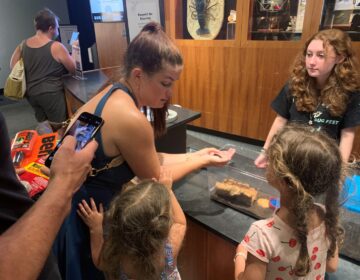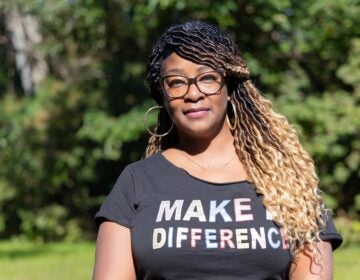This story is part of the WHYY News Climate Desk, bringing you news and solutions for our changing region.
From the Poconos to the Jersey Shore to the mouth of the Delaware Bay, what do you want to know about climate change? What would you like us to cover? Get in touch.
A group of Drexel University students and their professor are tackling textile waste — one discarded garment at a time.
Rachel Higgins, professor of Design and Merchandising at Drexel and co-founder of Pennsylvania Fibershed, said she and her students are starting local to address “a huge clothing waste problem” worldwide.
For the past week, student volunteers sorted through bins collected by the student-led Too Good to Toss program. The student-led program reduces trash and waste left behind when students move out.
“It’s pretty astounding the amount of waste that there is and the amount of stuff that students get rid of,” Higgins said. “And it just shows where we’re at as a society. I think this is a small microcosm that shows really just how much stuff people have, how much stuff they’re willing to just toss and get rid of. And I think it also shows how people don’t really know what happens to their clothes when they donate them.”
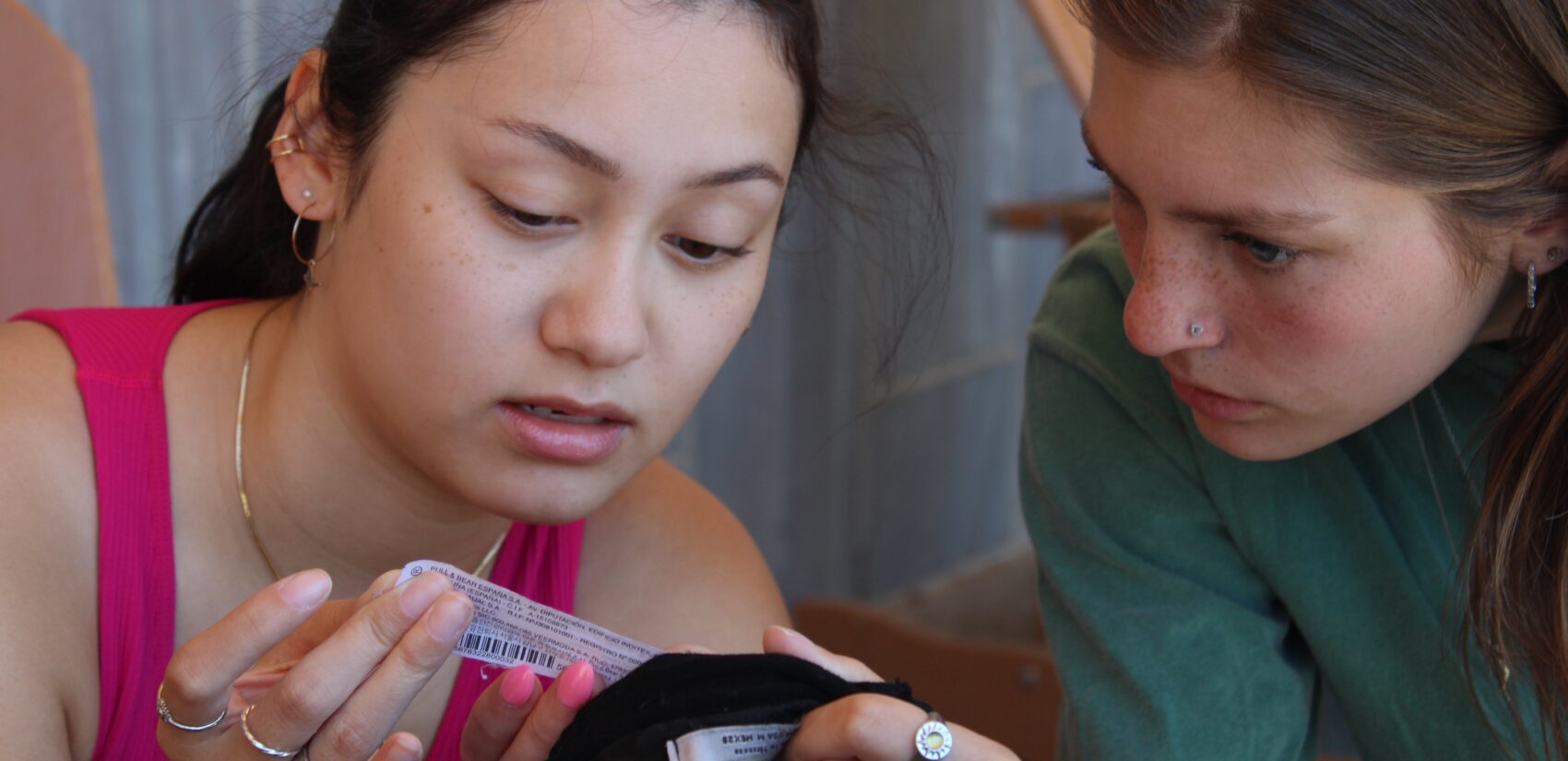
About 80% of donated clothes end up in landfills, Higgins said, or in global marketplaces in countries such as Ghana, or the giant clothing dump visible from space in Chile’s Atacama Desert.
Higgins said textile waste is also a “health crisis.” Clothes made of synthetic fibers release microplastics that harm the environment and people’s health. Higgins said dyes and finishes on clothes have been linked to cancer and hormone disruptors.
“This is just showing where we’re at and how we really need to shift and how brands need to also shift and pay attention to the materials that they’re making our clothing out of,” she said.
Some of the collected clothes will go to local organizations such as Our Closet. Others will be placed in a new thrift store the Design and Merchandising students are launching in a few weeks, creating what Higgins called “a circular system for textiles within the Drexel community.” Proceeds from the thrift store will go towards a fund for Design and Merchandising program and the Pennsylvania Fibershed.
Higgins and her students are going beyond recycling used clothes — they’re also recording data on discarded items to better understand textile waste in the Drexel community. Their findings will be published in the Design and Merchandising Impact report by the end of the summer.
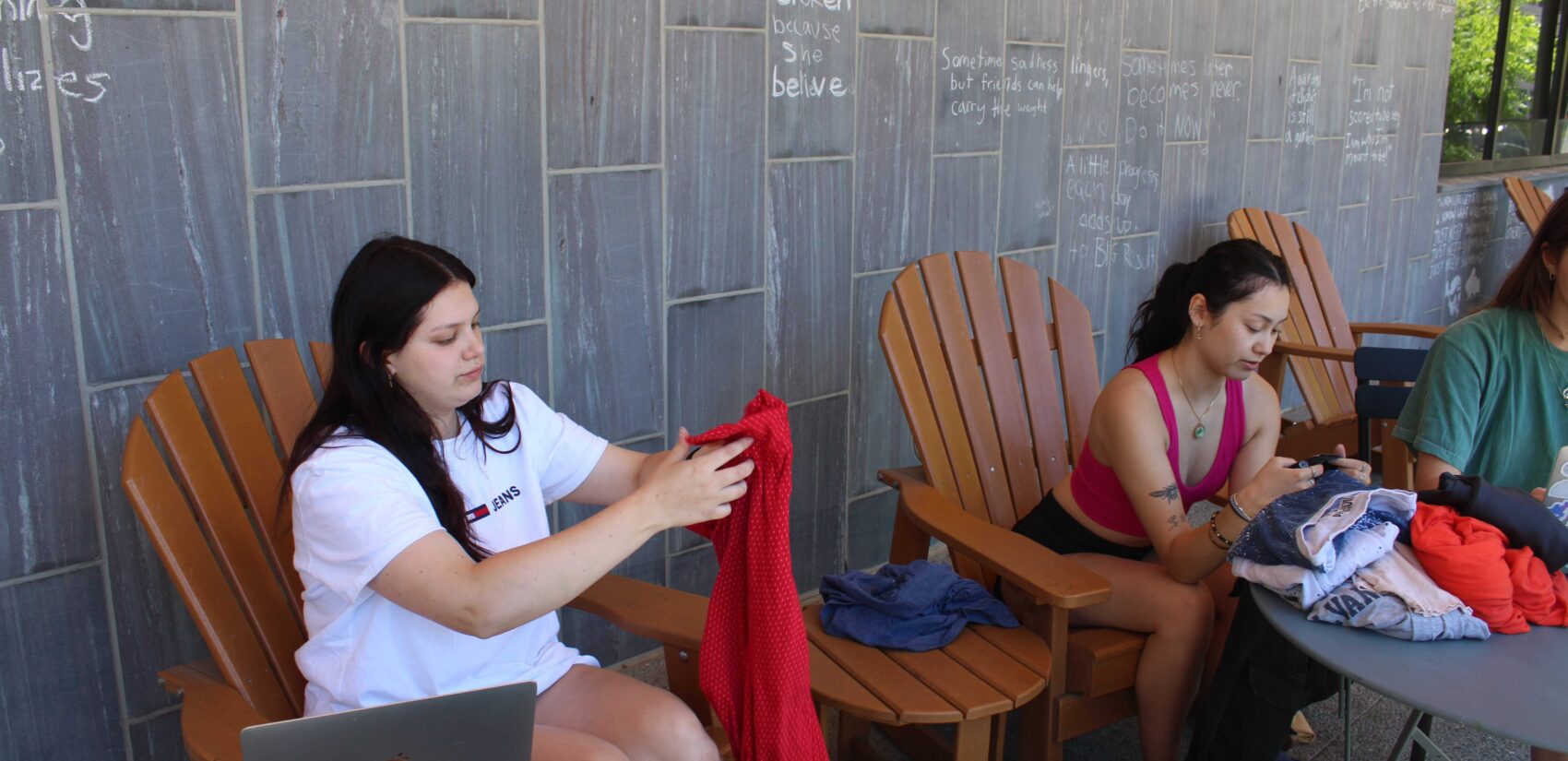
“In order to create other recycling systems, we really have to have a better understanding in the city in general of what our waste actually is. And there’s just not a lot of data on that right now,” Higgins said.
On a recent Saturday, Savannah Mitchum, a rising junior majoring in environmental studies and sustainability, sat with three fellow students as they meticulously recorded the size, brand, and materials for each discarded clothing item left by students during move out.
Mitchum said she joined the effort because it’s a way to make a dent in a large global issue.
“Fast fashion is rampant and it’s really, really affecting the environment in ways we don’t see, but it really is affecting every single person on this planet, even if you don’t see it,” she said. “It’s just really important for me and my community that we do something to prevent that.”

Higgins said figuring out what to do with clothes you don’t or can’t wear any more is “a little overwhelming but also simple at the same time.” Here are Higgins’ and Drexel students’ tips for how to tackle textile waste at the individual level:
- Rehome: “ If you think about it, re-homing is always our best option,” Higgins said. “So if you can find somebody who needs what you have, that’s much better. It’s actually going somewhere versus just throwing it into a donation bin.” Some examples of more specific donations: Friends, local Buy Nothing Facebook groups, area shelters and nonprofits collecting specific items.
Higgins said 80% of donated clothes end up in landfills in other countries. To avoid contributing to that cycle, the more specific of a home you can find for your clothes, the better.
- Repurpose: If your clothes are damaged, Higgins said you should either mend them before donating, or turn them into cleaning rags to extend their life cycle.“When you’re donating your clothes, they shouldn’t be missing buttons or zippers, they shouldn’t have holes in them. Those things are not eligible for donation,” Higgins said. “It may make you feel good to pretend that you’re putting in a donation pile, but really that’s going right to a landfill. So you’re just wasting people’s energy by having to sort through it.”
- Review your clothes annually: Katherine Moorcones, a rising senior at Drexel and student government vice president, said she tries to go through her clothes annually and donate or re-home clothes she doesn’t wear so that they can be repurposed as soon as possible.
- Host clothing swaps: Organize a clothing swap with friends or neighbors, turning trash into treasure.“You can have some wine and cheese and snacks and whatever and have a little get together,” Higgins said. “Everybody can bring stuff from their closet that they don’t want and it’s a great way to find something new and make sure your stuff is going to a good home.”
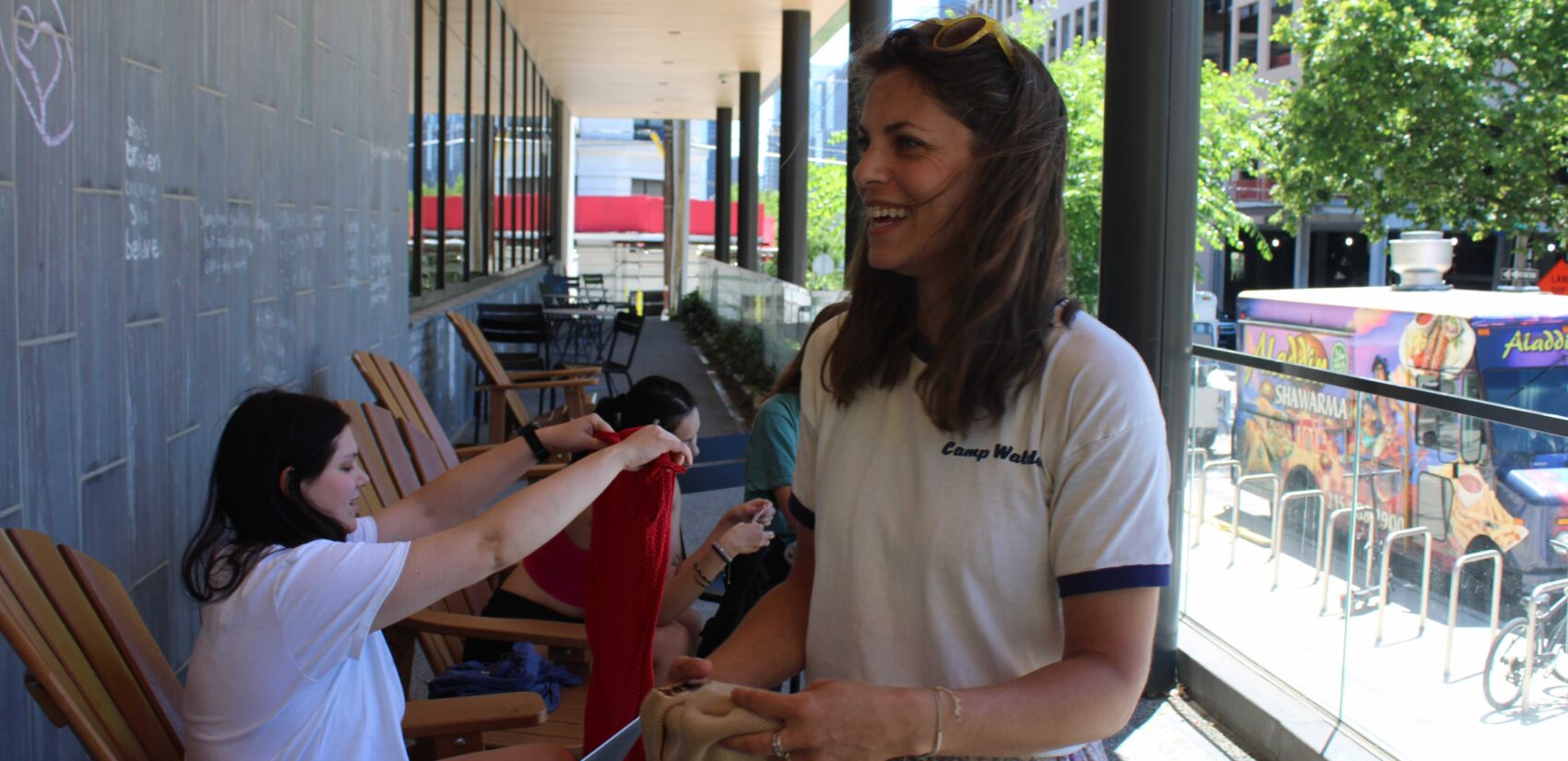
- Tell a story: Savannah Mitchum, a rising junior majoring in environmental studies and sustainability, said she “loves fashion,” but is intentional about what she buys and when, and tries to shop second-hand as often as possible.
“I had a friend tell me that everything he buys has to have a story to it. So just, like, changing the perception of what buying means,” Mitchum said.
- Walk away: Mitchum said one tactic she uses to buy less is to look at clothes in a store and then walk away and shop for other items she needs. If she forgets what she was looking at, or if the desire to purchase fades, she leaves without buying.For online shopping, experts recommend the same tactic: Add to your cart and leave it there for a week or two to reduce impulse buying.
- Thrift: If you’re able to purchase your own clothes second-hand, that is one of the best ways to reduce textile waste. “We already have all the clothing in the world we need,” Higgins said.
- Don’t rely on recycling: Higgins said it is only possible to recycle clothing items made from one material, such as linen or cotton. Many mass-produced clothes are made with a combination of materials, making it impossible to recycle them in a traditional sense.Higgins said most often, when recycling clothes is discussed at a mass level, the textiles are not being turned into other clothes. They’re probably being made into shoddy, mixed fibers that are broken down into a material used in insulation for stuffing in car seats, moving blankets and other similar items.“I want to make it super clear that recycling or clothing is not the answer,” Higgins said. “That is a Band-Aid solution to this larger problem. We have a problem with overproduction and overconsumption and unless we really address that, the idea of recycling, I think, is just going to make people feel better about shopping more, because you’re gonna be like, ‘Oh, I can recycle my clothing.’ And that’s really a dangerous place to be in. It’s a scary place to be in because that is not that is not the solution.”
- Buy smart: If you want to purchase clothes that could potentially be recycled, try to find something that is all one material. Natural fibers like linen and cotton are best, Higgins said.
“Those things are going to be more comfortable, more breathable and are really going to stand the test of time,” she said. “Even if they’re more expensive, it’s much better to invest in pieces that are going to last a while.”
Look for clothes that fit your style and comfort and that you know you will wear a lot. That might mean avoiding fashion trends or micro-trends.
“Find your own style. Find your own story,” said Moorcones. “Don’t follow the trends.”
Higgins said questions you can ask yourself when you’re buying something are: “Is this something I’m going to have in five years from now? Is this something that really has staying power in my wardrobe that I’m going to still be excited about, that’s a classic piece that I’ll be able to restyle?”
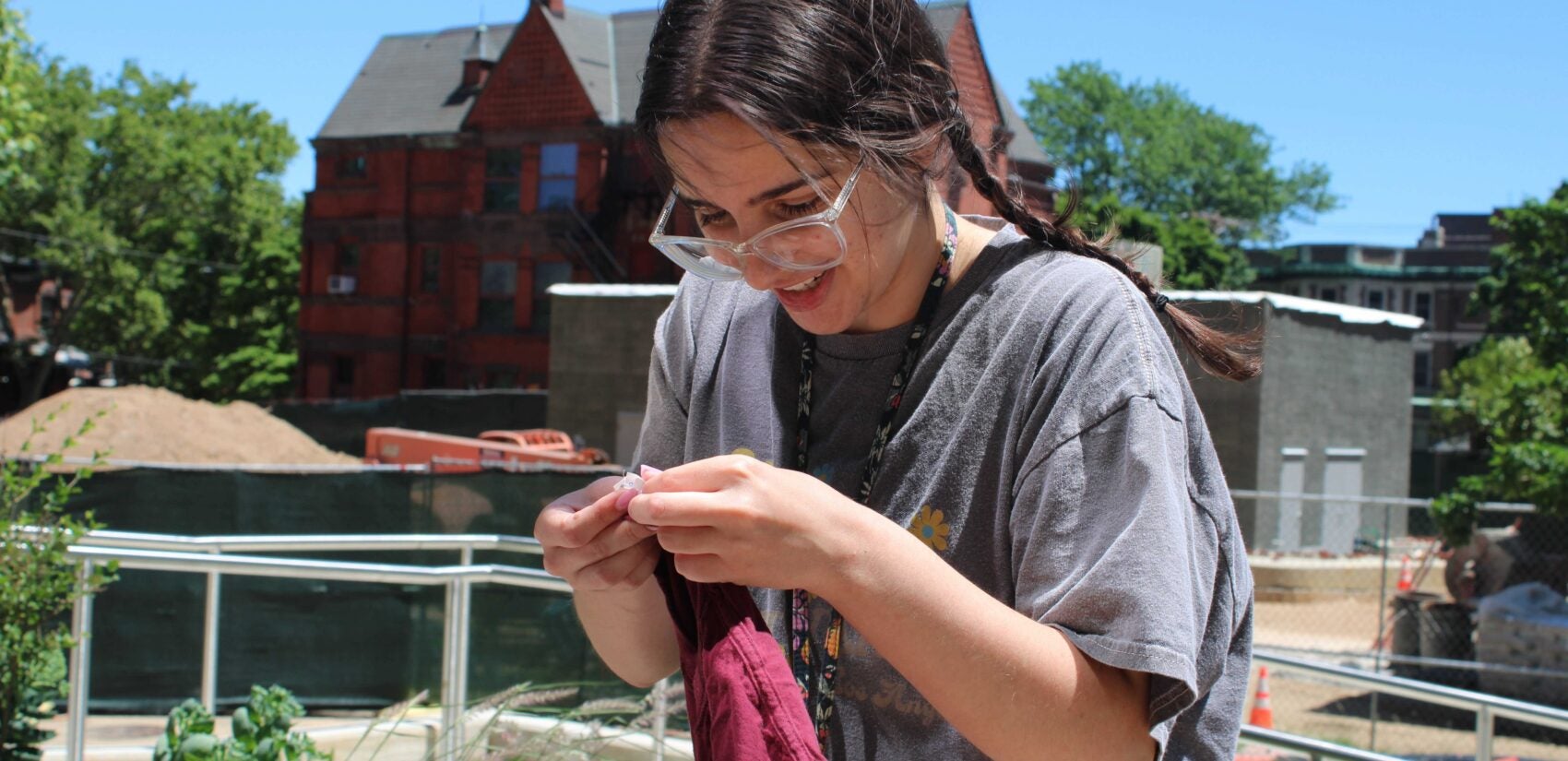

Get daily updates from WHYY News!
WHYY is your source for fact-based, in-depth journalism and information. As a nonprofit organization, we rely on financial support from readers like you. Please give today.



